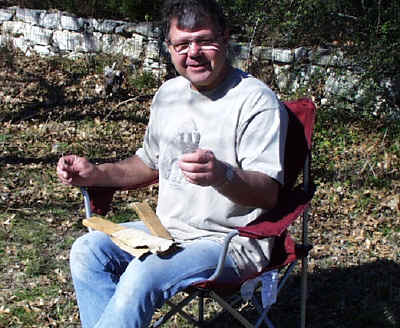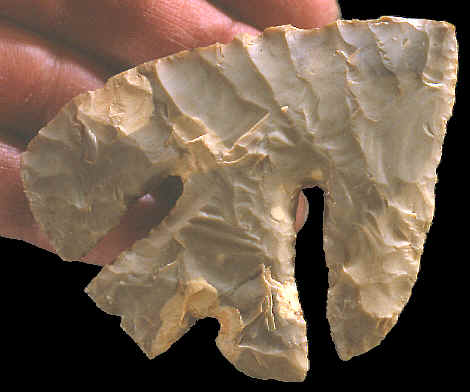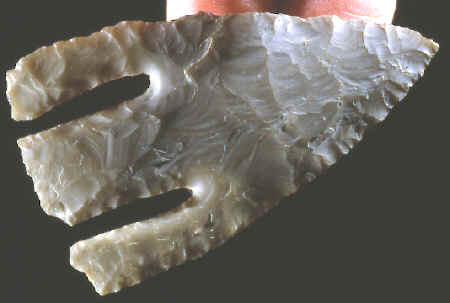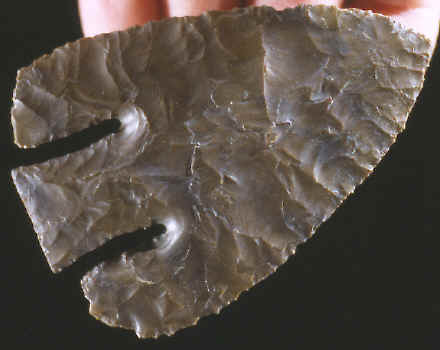|
|
|
Andice points date to the Early Archaic period to somewhere between 7,100 to 9,500 years ago. They are also related in time to Bell points but are usually larger. Their concentrated area of distribution is in central Texas. |
|
|
A unique trait of both Andice and Bell points concerns the way they were hafted onto handles. Most knives, with or without notches, where hafted onto handles by covering some of the basal edges with some type of hafting materials. Andice, Bell and even Calf Creek points were hafted onto the center stem. This left the barbs uncovered so they could be used as cutting edges. But this feature is probably one of the reasons why so many of the barbs broke off. |
|
|
|
|
Greg Perino describes Andice preforms as being "triangular with convex sides and a straight to slightly convex basal edge." He goes on to say that they are broad thin knife forms and have long narrow basal notches. These points are generally wide and triangular in outline and they have prominent barbs that are usually squared and they extend to the basal edge. The rectangular basal stems are also usually thinned. |
|
|
|
|
Several years ago Elton R. Prewitt measured 50 points he believed to have been Andice points. The longest one measured 4 3/16 inches (10.6 cm) long. The average size was 2 3/4 inches (7 cm) long. The average thickness was 5/16 on an inch (7.7 mm) thick. The average width was 1 3/4 inches (4.4 cm) wide. In a paper written by Carey Weber in 1986, measurements of 60 Andice and Bell points were taken. He determined that measurements alone could not support two separate points types (Andice and Bell). He says that further information would be needed for a clear and separate division of Andice and Bell points. This would include site excavations with good stratigraphic profiles and more geographical distribution data. |
|
|
Carey Weber has been analyzing deep basal notched knives for more than a quarter of a century. Some of the best information has come from his experimental archaeology. Actually working out manufacturing techniques that result in authentic replicas of the ancient artifacts is impressive, especially a point type that is so difficult to make. There are other flintknappers who could make an Andice point but not very many! Carey's ability to also have his data published has made his lifelong journey of studying primitive technologies a success. |
|
|
BIBLIOGRAPHY WEBER.
CAREY D. |
|
|
"REFERENCES"
1985,
"Selected Preforms, Points, and Knives of the North American Indians,
Vol. I," Calf Creek, by Greg Perino, p.62. |
|




